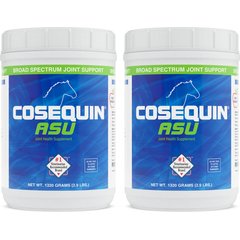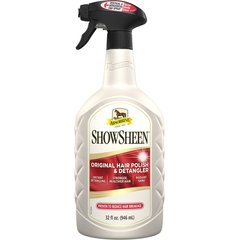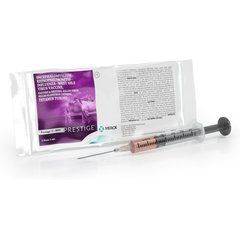Cellulitis in Horses
What is Cellulitis in Horses?
Cellulitis is an infection that forms under the skin. Horses are especially prone to these infections because they are naturally outdoor animals.
It only takes a small scratch or wound on the skin to allow bacteria into the body. Cellulitis can develop anywhere that a cut occurs, but the legs are most affected. Since cellulitis is associated with a specific injury or break in the skin, it usually only affects one limb at a time.
Shop Horse Products
- Tribute Equine Nutrition Kalm N' EZ Pellet Low-NSC, Molasses-Free Horse Feed, 50-lb bag$25.49Chewy Price
- Nutramax Cosequin ASU Powder Joint Health Supplement for Horses, 2.86-lb tub, bundle of 2$279.98Chewy Price
- Absorbine ShowSheen Instant Detangling Hair Polish & Detangler Horse Spray, 32-fl oz bottle$17.84Chewy Price
- Prestige 5 + WNV Vaccine for Horses, 1-mL syringe$53.99Chewy Price
Symptoms of Cellulitis in Horses
-
Heat
-
Swelling
-
Marked sensitivity to touch
-
Lameness at the walk
-
Occasionally fever
The affected limb will be extremely swollen and sensitive to the touch. If your horse lets you touch it, press the skin with your fingers which will indent and stay indented for some time. This is called pitting edema. Cellulitis is extremely painful, and most horses won’t want to bear any weight on the affected leg at all.
Causes of Cellulitis in Horses
Bacterial infection which infiltrates through:
-
Wounds/injuries/trauma
-
Pastern dermatitis (scratches)
Staphylococcus is a bacterium that naturally lives on the skin of horses and other animals. When a wound or break in the skin occurs, these bacteria can migrate under the skin and multiply causing an infection. The horse’s body then responds by sending lots of white blood cells to the area. In cellulitis, this response brings fluid into the area as well, resulting in the edema that tightens the skin and causes severe pain.
How Veterinarians Diagnose Cellulitis in Horses
Whenever your horse has lameness or swelling, it is important to call your veterinarian to help determine the cause. With the level of lameness seen in cellulitis, it is very important to rule out a fracture or another life/career threatening cause.
Your veterinarian will perform a full physical exam and a lameness exam to diagnose cellulitis. In some cases, radiographs may be necessary to rule out a fracture or an ultrasound may be helpful to rule out soft tissue injuries and strains.
Treatment of Cellulitis in Horses
Cellulitis is a bacterial infection, so the primary treatment is antibiotics. Additionally, your veterinarian will likely recommend a medication to help with the pain and inflammation such as Phenylbutazone or Banamine. Cold hosing can also help bring down the swelling.
Once the horse is comfortable enough to be touched, wrapping the affected limb can help to reduce the swelling. Your veterinarian may also recommend hand walking or lunging. Getting your horse moving will help the lymphatic system to move the extra fluid out of the limb more quickly.
Cellulitis can lead to an infection of the lymphatic vessels in the limb called lymphangitis. This is a more systemic infection but is treated in the same way as cellulitis.
Recovery and Management of Cellulitis in Horses
Most cellulitis cases respond completely to antibiotics. However, after an infection, the subcutaneous tissue is disrupted. This means that the limb is more susceptible to developing cellulitis again in the future and extra care should be taken with wounds and cleaning.
In rare cases, a horse who has experienced multiple cellulitis episodes in the same limb can become resistant to treatment. These horses are in chronic pain and euthanasia may be the only viable option to bring relief.
The best way to treat cellulitis is to prevent it from happening in the first place.
-
Keep all breaks in the skin clean and dry, no matter how minor
-
Consider bandaging wounds on limbs until they are completely healed
-
Keep stall and paddock areas clean and dry
-
Thoroughly dry your horse after bathing or exercise
Cellulitis in Horses FAQs
Does cellulitis in horses go away?
Yes, in most cases, cellulitis goes away with a course of antibiotics. However, once a horse has had cellulitis, they are more likely to contract it again in the future.
How long does it take cellulitis to heal in horses?
You will often see improvement after only a few days of treatment. It is important to complete the entire course of antibiotics prescribed by your veterinarian to help prevent resistant infections from forming.
Featured Image: iStock.com/castenoid




